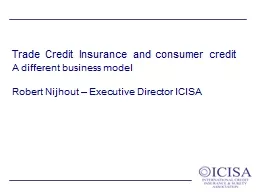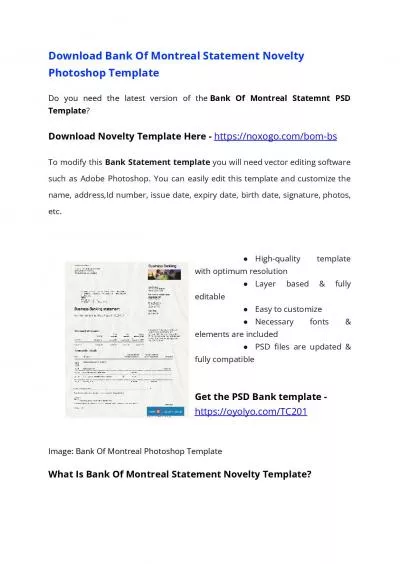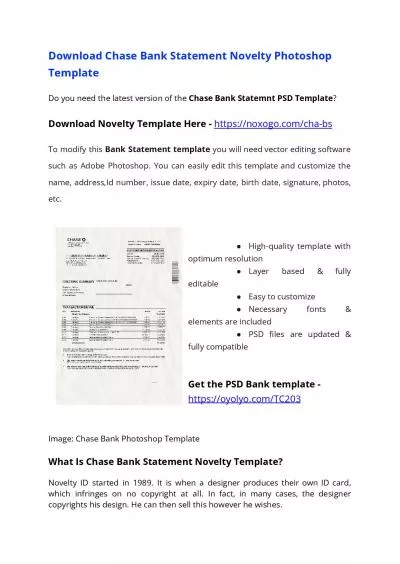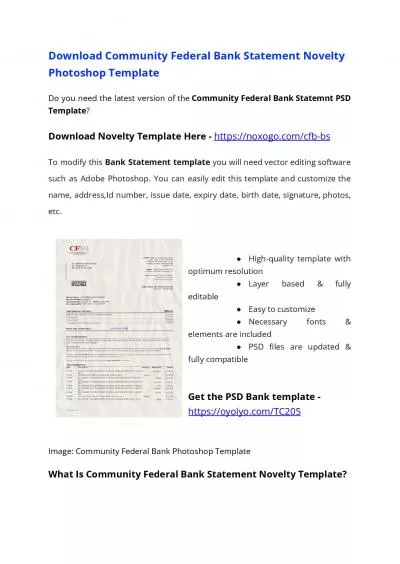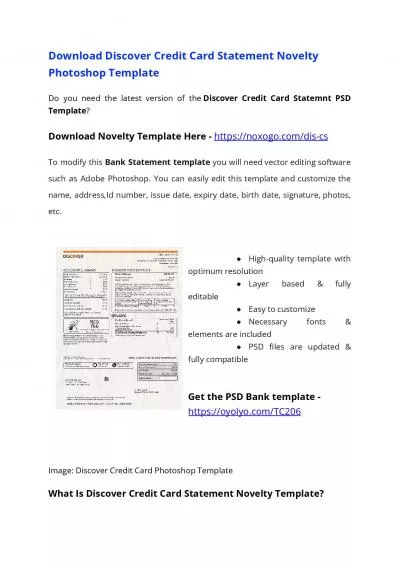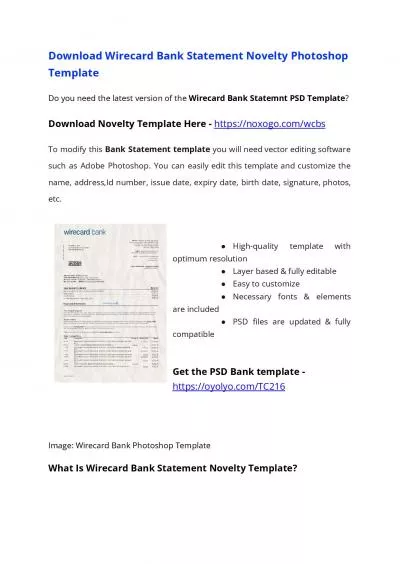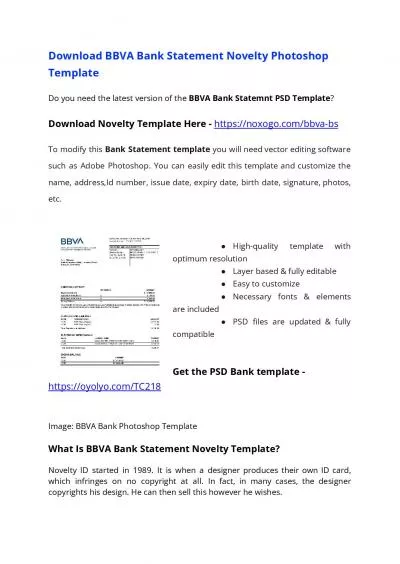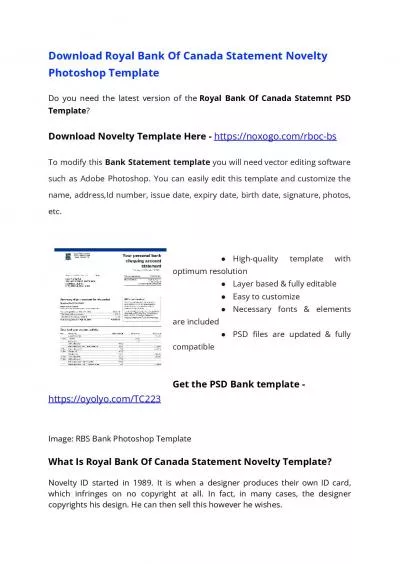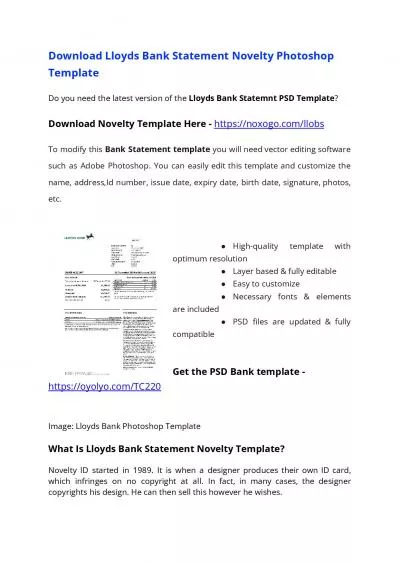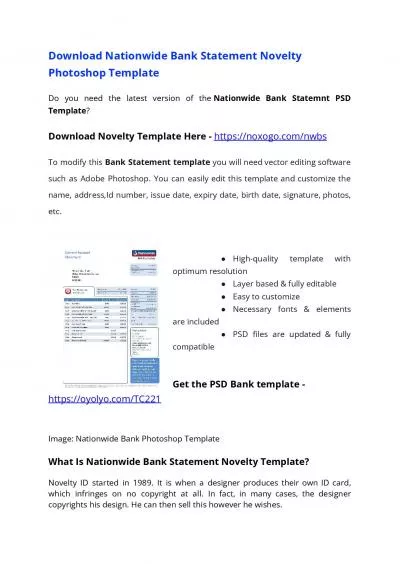PPT-Bank Credit, Trade Credit or No Credit?
Author : pamella-moone | Published Date : 2017-08-29
Evidence from the Surveys of Small Business Finances Rebel A Cole DePaul University 2011 Annual Meetings of the Financial Management Association October 22 2011
Presentation Embed Code
Download Presentation
Download Presentation The PPT/PDF document "Bank Credit, Trade Credit or No Credit?" is the property of its rightful owner. Permission is granted to download and print the materials on this website for personal, non-commercial use only, and to display it on your personal computer provided you do not modify the materials and that you retain all copyright notices contained in the materials. By downloading content from our website, you accept the terms of this agreement.
Bank Credit, Trade Credit or No Credit?: Transcript
Download Rules Of Document
"Bank Credit, Trade Credit or No Credit?"The content belongs to its owner. You may download and print it for personal use, without modification, and keep all copyright notices. By downloading, you agree to these terms.
Related Documents



